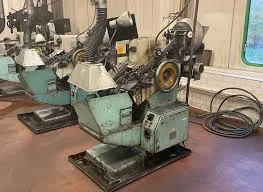
-
 Afrikaans
Afrikaans -
 Albanian
Albanian -
 Amharic
Amharic -
 Arabic
Arabic -
 Armenian
Armenian -
 Azerbaijani
Azerbaijani -
 Basque
Basque -
 Belarusian
Belarusian -
 Bengali
Bengali -
 Bosnian
Bosnian -
 Bulgarian
Bulgarian -
 Catalan
Catalan -
 Cebuano
Cebuano -
 Corsican
Corsican -
 Croatian
Croatian -
 Czech
Czech -
 Danish
Danish -
 Dutch
Dutch -
 English
English -
 Esperanto
Esperanto -
 Estonian
Estonian -
 Finnish
Finnish -
 French
French -
 Frisian
Frisian -
 Galician
Galician -
 Georgian
Georgian -
 German
German -
 Greek
Greek -
 Gujarati
Gujarati -
 Haitian Creole
Haitian Creole -
 hausa
hausa -
 hawaiian
hawaiian -
 Hebrew
Hebrew -
 Hindi
Hindi -
 Miao
Miao -
 Hungarian
Hungarian -
 Icelandic
Icelandic -
 igbo
igbo -
 Indonesian
Indonesian -
 irish
irish -
 Italian
Italian -
 Japanese
Japanese -
 Javanese
Javanese -
 Kannada
Kannada -
 kazakh
kazakh -
 Khmer
Khmer -
 Rwandese
Rwandese -
 Korean
Korean -
 Kurdish
Kurdish -
 Kyrgyz
Kyrgyz -
 Lao
Lao -
 Latin
Latin -
 Latvian
Latvian -
 Lithuanian
Lithuanian -
 Luxembourgish
Luxembourgish -
 Macedonian
Macedonian -
 Malgashi
Malgashi -
 Malay
Malay -
 Malayalam
Malayalam -
 Maltese
Maltese -
 Maori
Maori -
 Marathi
Marathi -
 Mongolian
Mongolian -
 Myanmar
Myanmar -
 Nepali
Nepali -
 Norwegian
Norwegian -
 Norwegian
Norwegian -
 Occitan
Occitan -
 Pashto
Pashto -
 Persian
Persian -
 Polish
Polish -
 Portuguese
Portuguese -
 Punjabi
Punjabi -
 Romanian
Romanian -
 Russian
Russian -
 Samoan
Samoan -
 Scottish Gaelic
Scottish Gaelic -
 Serbian
Serbian -
 Sesotho
Sesotho -
 Shona
Shona -
 Sindhi
Sindhi -
 Sinhala
Sinhala -
 Slovak
Slovak -
 Slovenian
Slovenian -
 Somali
Somali -
 Spanish
Spanish -
 Sundanese
Sundanese -
 Swahili
Swahili -
 Swedish
Swedish -
 Tagalog
Tagalog -
 Tajik
Tajik -
 Tamil
Tamil -
 Tatar
Tatar -
 Telugu
Telugu -
 Thai
Thai -
 Turkish
Turkish -
 Turkmen
Turkmen -
 Ukrainian
Ukrainian -
 Urdu
Urdu -
 Uighur
Uighur -
 Uzbek
Uzbek -
 Vietnamese
Vietnamese -
 Welsh
Welsh -
 Bantu
Bantu -
 Yiddish
Yiddish -
 Yoruba
Yoruba -
 Zulu
Zulu
Different Methods and Applications of Thread Rolling Techniques in Manufacturing
Types of Thread Rolling Service An In-Depth Exploration
Thread rolling is a popular manufacturing process used to create threads on cylindrical parts without removing any material. Instead of cutting, it displaces material to form the desired threads, leading to enhanced strength and better surface finish. This process is widely used in various industries, including automotive, aerospace, and industrial machinery. Understanding the different types of thread rolling services available can help manufacturers choose the right method for their specific needs.
1. Conventional Thread Rolling
Conventional thread rolling is one of the most common methods used to produce external threads. It typically employs two flat dies or two cylindrical dies that rotate against the workpiece, displacing material to create the thread profile. This method is suitable for producing threads with significant diameter and length variations. It is particularly efficient for high-volume production, as it allows for rapid processing speeds while maintaining tight tolerances.
2. Thread Rolling with Circular Dies
Circular die thread rolling is another popular method that uses cylindrical dies to create threads. Unlike conventional flat die methods, this technique offers the advantage of producing threads on parts with larger diameters and longer lengths. Circular dies embrace the workpiece as they rotate, providing a more uniform pressure distribution and reducing the risk of material deformation. This process is often used for applications where consistent thread quality is paramount, such as in automotive fasteners.
Vertical thread rolling is a specialized method ideally suited for producing short length threads with high precision. In this process, the workpiece is held vertically, and the rollers apply pressure from the top. This technique allows for significant control over the threading process and is particularly effective for small-diameter components. Manufacturers often prefer vertical rolling when dealing with limited space, as it minimizes the footprint of the machinery.
types of thread rolling service

4. Horizontal Thread Rolling
In contrast to vertical thread rolling, horizontal thread rolling involves positioning the workpiece horizontally. This method is versatile and can handle a variety of thread sizes and lengths. Horizontal rolling is commonly used in applications requiring continuous production runs. The flexibility of this technique makes it an excellent choice for manufacturers looking to produce a range of threaded components efficiently.
5. Form Thread Rolling
Form thread rolling is a unique process that creates threads by gradually shaping the workpiece instead of cutting into it. This process is ideal for producing threads with complex profiles or when high strength is required. The material flow is carefully controlled to ensure the final product meets stringent dimensional specifications. Form thread rolling is often utilized in high-stress applications, such as parts used in aerospace and heavy machinery.
6. Precision Thread Rolling
Precision thread rolling is focused on producing high-tolerance threads for critical applications. This method often involves advanced technology and stringent quality control measures to ensure that the threads meet exact specifications. Precision rolling is essential for components used in aerospace, medical devices, and other industries where failure is not an option. High-tech monitoring systems are often employed to maintain consistency throughout the production process.
Conclusion
The various types of thread rolling services provide manufacturers with the flexibility to choose methods that best suit their production needs and requirements. From conventional and circular die methods to more specialized processes like form and precision thread rolling, each approach offers unique advantages. As industries continue to evolve, the demand for high-quality threaded components will only increase, making thread rolling a vital process in modern manufacturing. Understanding these techniques allows manufacturers to optimize their production capabilities and deliver superior products to their customers.
